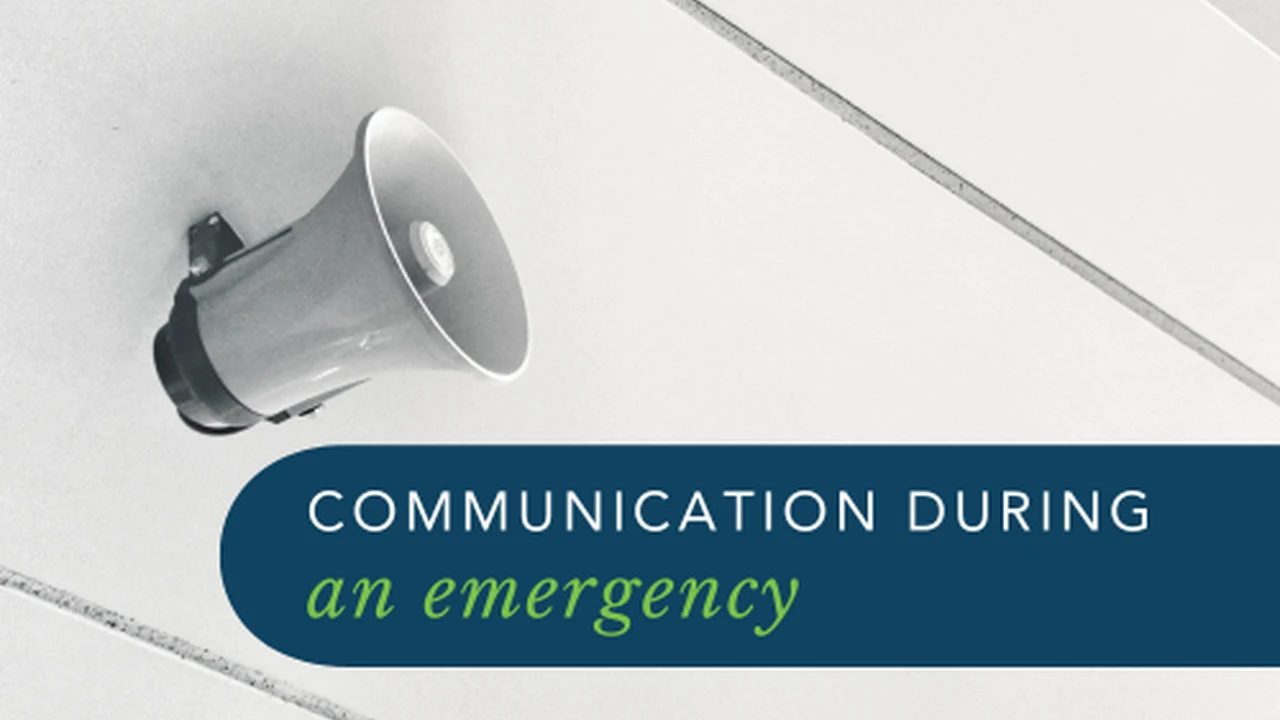Emergency Communication Options for Remote Areas
Staying connected in remote areas is vital for safety. Explore different emergency communication options, including satellite phones, personal locator beacons, and two-way radios. Ensure you can call for help when needed, no matter where you are.

Why Emergency Communication is Crucial for Adventure Travel
Alright, adventurer, let's talk about something super important: staying connected when you're off the beaten path. We all love the thrill of exploring remote areas, but let's face it, things can go sideways. Whether it's a twisted ankle on a hiking trail, a sudden change in weather, or just plain getting lost, having a reliable way to call for help can be a lifesaver – literally.
Think about it: you're miles from civilization, your phone has no signal, and the sun is starting to set. That's not the time to realize you should have packed a satellite phone. Emergency communication isn't just a \"nice-to-have\"; it's a fundamental part of your safety gear, right up there with a first-aid kit and a sturdy pair of boots.
Satellite Phones: The Gold Standard for Remote Communication
When it comes to reliable communication in areas with zero cell service, satellite phones are the kings and queens of the hill. These devices connect to satellites orbiting the earth, allowing you to make calls, send texts, and even access the internet from almost anywhere on the planet. Yes, they're a bit of an investment, but when your safety is on the line, they're worth every penny.
How Satellite Phones Work for Remote Travel
Satellite phones work by transmitting radio signals to orbiting satellites, which then relay the signal back to a ground station. This process allows you to communicate even in areas where traditional cellular networks are unavailable. They're typically rugged, designed to withstand harsh conditions, and offer decent battery life.
Top Satellite Phone Recommendations for Adventure Travelers
Here are a few satellite phone models that consistently get rave reviews from adventure travelers:
- Iridium Extreme 9575: This is a workhorse. It's incredibly durable, water-resistant, and offers global coverage. It also has a built-in GPS and an emergency SOS button that connects directly to emergency services. You're looking at around $1,300 - $1,500 for the phone itself, plus a monthly service plan.
- Inmarsat IsatPhone 2: A slightly more affordable option than the Iridium, the IsatPhone 2 still provides reliable global coverage. It's known for its long battery life and user-friendly interface. Expect to pay around $900 - $1,200 for the phone and then choose your service plan.
- Thuraya X5-Touch: This one's a bit different because it runs on Android! It's a satellite phone and a smartphone in one. It offers dual-mode operation (satellite and GSM) and supports various apps. The price is usually around $1,200 - $1,400, plus service fees.
Comparing Satellite Phone Models: Iridium vs Inmarsat vs Thuraya
Choosing the right satellite phone really depends on your needs and budget. Here's a quick comparison:
- Coverage: Iridium offers true global coverage, including the polar regions. Inmarsat's coverage is almost global but has some gaps. Thuraya's coverage is primarily focused on Europe, Africa, Asia, and Australia.
- Durability: All three are built to be tough, but the Iridium Extreme is generally considered the most rugged.
- Battery Life: Inmarsat IsatPhone 2 typically wins in the battery life department.
- Price: Inmarsat is usually the most budget-friendly option, followed by Thuraya, and then Iridium.
Using Scenario Example: Imagine you're trekking in the Himalayas. Iridium's global coverage ensures you can reach out for help no matter where you are on the mountain. If you're sailing across the Atlantic, Inmarsat's long battery life is a huge advantage. For someone traveling across Africa and needing the flexibility of Android apps, Thuraya might be the best choice.
Personal Locator Beacons (PLBs): A Direct Line to Rescue
Personal Locator Beacons (PLBs) are small, waterproof devices designed to transmit a distress signal to search and rescue authorities via satellite. Unlike satellite phones, they don't allow two-way communication, but they are incredibly reliable and easy to use in emergencies.
How PLBs Work for Emergency Situations
When activated, a PLB sends a coded signal to the COSPAS-SARSAT satellite system, which is monitored by search and rescue organizations worldwide. The signal includes your location, allowing rescuers to pinpoint your exact coordinates. Most PLBs also have a built-in GPS to improve location accuracy.
Recommended PLB Devices for Adventure Travel
Here are some popular PLB models:
- ACR ResQLink 400: This is a lightweight and compact PLB that's easy to carry. It has a built-in GPS and a powerful 406 MHz signal. It's also buoyant, which is great if you're near water. Expect to pay around $300 - $350.
- Ocean Signal rescueME PLB1: This is one of the smallest PLBs on the market. It's packed with features, including a multi-channel GPS and a strobe light. It's priced around $280 - $320.
- McMurdo FastFind 220 PLB: Known for its reliability and user-friendly interface, the FastFind 220 is a solid choice. It also has a long battery life. It typically sells for around $320 - $380.
PLB Usage Scenarios: When to Choose a PLB Over a Satellite Phone
PLBs are ideal for situations where you need a simple, reliable way to call for help without the need for ongoing communication. For example:
- Solo Hiking: If you're hiking alone in a remote area, a PLB can provide peace of mind knowing that you can summon help with the push of a button.
- Mountaineering: In mountaineering, where conditions can change rapidly, a PLB can be a critical piece of safety gear.
- Boating: PLBs are essential for boaters, especially those venturing offshore, where cell service is nonexistent.
Two-Way Radios: Communication for Group Adventures
Two-way radios, also known as walkie-talkies, are a great option for communicating with others in your group, especially when you're within a limited range. They're simple to use, relatively inexpensive, and don't require any subscription fees.
Benefits of Two-Way Radios for Group Travel
Two-way radios are perfect for:
- Keeping in Touch: Staying connected with your group members, especially when you're spread out on a trail or exploring a campsite.
- Coordination: Coordinating activities, such as setting up camp, navigating a route, or responding to emergencies.
- Safety: Alerting others to hazards, such as wildlife sightings or changes in weather.
Recommended Two-Way Radio Models for Adventure Travel
Here are a few two-way radio models that are popular among adventure travelers:
- Motorola T800 Talkabout: This radio has a decent range (up to 35 miles in ideal conditions), is waterproof, and even has the ability to share locations and messages via Bluetooth with other T800 users. It costs around $80 - $100 per pair.
- Midland GXT1000VP4: This is a rugged and reliable radio with a range of up to 36 miles. It has 50 channels, NOAA weather alerts, and is waterproof. Expect to pay around $70 - $90 per pair.
- BaoFeng BF-F8HP: This is a more advanced radio that requires a HAM radio license to operate legally in some areas. It offers greater power and range than the other models. The price is around $60 - $70 per radio.
Understanding Range Limitations and Environmental Factors
It's important to understand that the advertised range of two-way radios is often based on ideal conditions, such as open terrain with no obstructions. In reality, the range can be significantly reduced by factors such as trees, hills, buildings, and weather. Always test your radios in the environment where you'll be using them to get a realistic idea of their range.
Satellite Messengers: The Best of Both Worlds
Satellite messengers combine the benefits of satellite phones and PLBs, offering two-way text messaging, GPS tracking, and SOS capabilities. They're a great option for travelers who want to stay connected without the cost and complexity of a satellite phone.
How Satellite Messengers Provide Communication in Remote Locations
Satellite messengers work by connecting to satellite networks to send and receive text messages, share your location with contacts, and trigger an SOS alert in case of emergency. They typically require a subscription plan.
Top Satellite Messenger Devices for Adventure Travelers
Here are some of the top satellite messenger devices on the market:
- Garmin inReach Mini 2: This is a compact and lightweight satellite messenger that offers two-way text messaging, GPS tracking, and SOS capabilities. It's incredibly popular among hikers and backpackers. The device costs around $400, plus a monthly subscription.
- SPOT X: The SPOT X offers two-way satellite messaging, GPS tracking, and SOS capabilities with a full QWERTY keyboard. It's a bit larger than the inReach Mini 2 but offers a more user-friendly texting experience. It's priced around $250, plus a subscription.
Comparing Satellite Messengers: Garmin inReach vs SPOT Devices
Both Garmin inReach and SPOT devices are excellent choices for satellite messaging, but there are some key differences:
- Network: Garmin inReach uses the Iridium satellite network, which offers global coverage. SPOT uses the Globalstar network, which has some coverage limitations.
- Messaging: Garmin inReach offers more robust messaging features, including the ability to send and receive custom messages. SPOT devices offer pre-set messages and limited custom messaging.
- SOS: Both devices offer SOS capabilities, but Garmin inReach's SOS service is managed by Garmin Response, while SPOT's is managed by GEOS International Emergency Response Coordination Center.
Choosing the Right Emergency Communication Option
So, which emergency communication option is right for you? Here's a quick guide:
- Satellite Phone: Best for travelers who need reliable voice communication and internet access in remote areas, and are willing to pay for it.
- PLB: Best for solo adventurers who need a simple, reliable way to call for help in emergencies.
- Two-Way Radio: Best for group travel where you need to stay in touch with others within a limited range.
- Satellite Messenger: Best for travelers who want two-way text messaging, GPS tracking, and SOS capabilities without the cost and complexity of a satellite phone.
Tips for Using Emergency Communication Devices Effectively
No matter which emergency communication device you choose, here are a few tips for using it effectively:
- Test Your Device: Before you head out on your adventure, test your device to make sure it's working properly and that you know how to use it.
- Register Your Device: Register your PLB or satellite messenger with the appropriate authorities so that they have your contact information and emergency contacts.
- Keep Your Device Charged: Make sure your device is fully charged before you leave, and bring a portable charger or spare batteries.
- Store Your Device Safely: Store your device in a waterproof bag or case to protect it from the elements.
- Know How to Use It: Practice using your device before you need it in an emergency.
Staying connected in remote areas is essential for your safety and peace of mind. By choosing the right emergency communication option and using it effectively, you can explore the world with confidence, knowing that you can always call for help if you need it. So go out there, explore, and stay safe!
:max_bytes(150000):strip_icc()/277019-baked-pork-chops-with-cream-of-mushroom-soup-DDMFS-beauty-4x3-BG-7505-5762b731cf30447d9cbbbbbf387beafa.jpg)






